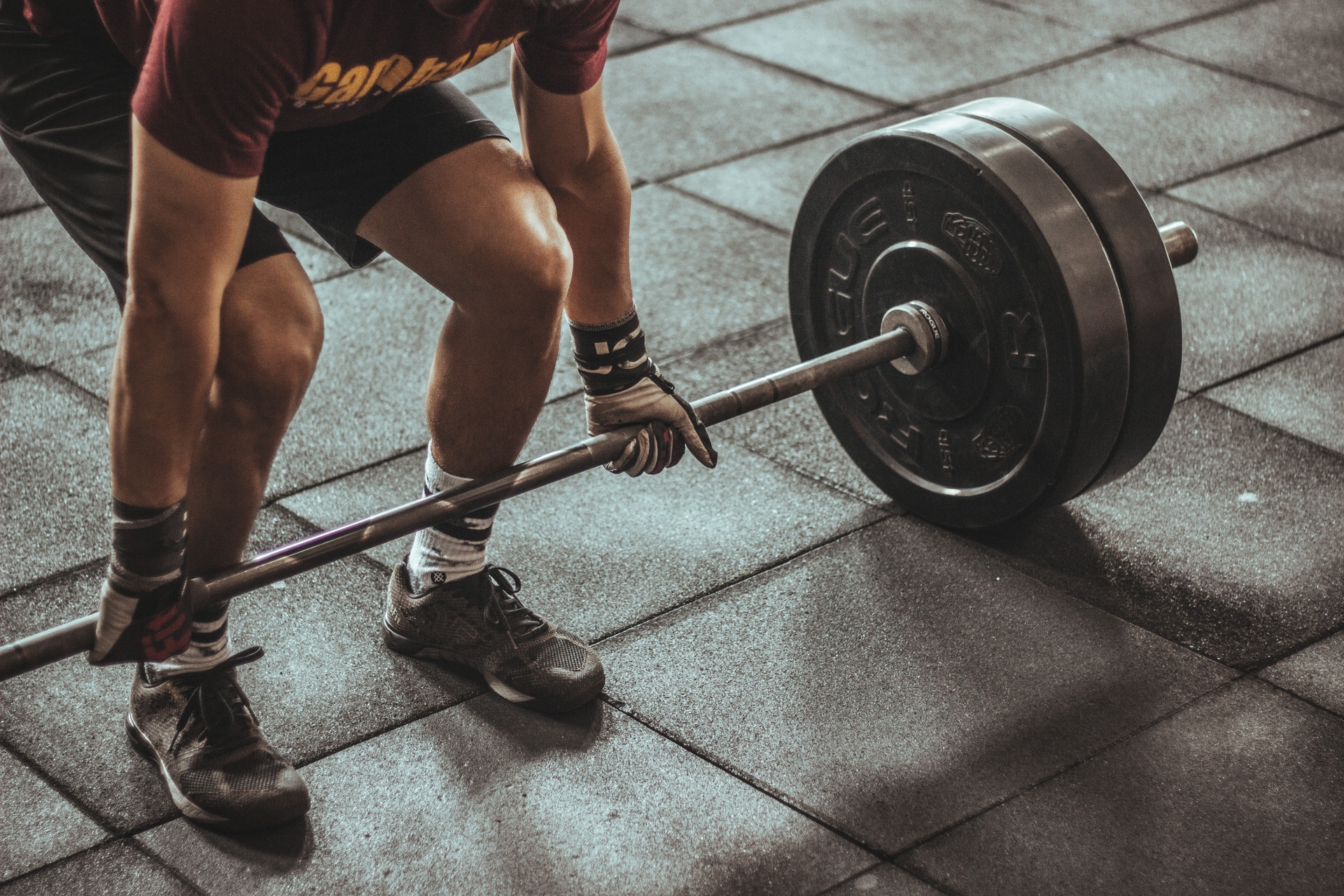
Get the Six Habits for Overcoming Isolation Guide for free
Before you start lifting weights or start counting calories, you must have a specific and tangible goal in mind as to why you're doing it. If you have a vague, uninspiring or unrealistic goal you will quit before you know it.
Listen to the podcast version here
You can rest assured that anyone who has the body you aspire to has very specific, actionable, and realistic health and fitness goals and is driven to progressively improve every day.
In order to maintain the motivation to put in the work, put some thought into these prompts and write down your answers.
What does your ideal body look like? Find pictures of exactly what you want to look like and store them in a safe place for future reference. It's important to have an exact visual image of what you want to look like.
What would your ideal state of health be like? Even if your primary motivation to increase physical fitness is purely aesthetic, you may soon realize that the health benefits are just as motivating.
Why do you want to achieve your fitness goals? Maybe you want to boost your confidence, feel better about yourself, or simply have more energy throughout the day. Knowing your why will keep you motivated when the going gets rough.
What does your ideal body look like? My ideal body type is a muscular but functional build. In the past my large size caused me to be easily fatigued and injured, so nowadays I focus more on functional movements and injury prevention.
What would your ideal state of health be like? My ideal state of health is waking up in the morning with an abundant amount of energy and no pains in my body, and to carry on this energy throughout the day.
Why do you want to achieve your fitness goals? I want to achieve my fitness goals in order to feel good and confident in my body and to maintain it for decades to come. For obvious reasons I also care about physical fitness in order to attract partners and to me, my body is a reflection of my choices. Finally, exercising is a vital component of my mental health.
Now that you know how to lay the foundation of your physical fitness journey, let's talk about some of the most common myths and errors people make. You won't completely avoid them, especially just starting out, but awareness will help.
Error #1: More sets equals more growth. The truth is that too many sets can actually be detrimental by causing overtraining, which decreases muscle growth and makes you feel lethargic.
Error #2: The burn causes growth. The burning sensation is actually a buildup of lactic acid in the muscle, while this does induce some anabolic processes it is not the optimal way.
Error #3: Wasting time on low-return exercises. Most of the workout machines and contraptions at your gym are useless because they don't stimulate muscle growth the same way free weights do.
Error #4: Lifting like a fool. Most of us don't have a clue about proper form when it comes to exercising. This ignorance causes unnecessary wear and tear on tendons and joints, and paves the way to injury.
Error #5: Lifting with a weak mentality. Most people I've worked with don't want to exert themselves too much, and as a result their bodies didn't change much either. If you push through the mental discomfort, you will make progress.
Error #6: Improper nutrition. Many beginners will overtrain and under-eat in the hopes of losing fat and gaining muscle. This is a fallacy, in order to grow you must eat at a caloric surplus, and in order to lose weight you must eat at a caloric deficit.
You now know some of the most common errors people make, so let's go over the basics of what builds muscle.
Constant #1: Muscles only grow when they are forced to do so. Lifting weights causes micro-tears in the muscle tissue, which forces the body to repair and adapt in order to better handle the stimulus that caused the damage.
Constant #2: Growth is caused by overload, not fatigue or a pump. The burning sensation that usually follows from high-rep exercises is not an indicator of a good workout. Building muscle requires lifting heavy weights in the 4-6 reps range.
Constant #3: Growth happens outside of the gym. Building muscle isn't a matter of lifting excessively as it takes the body 2-5 days to repair the muscle tissue. In other words, most of your growth happens outside of the gym such as during your sleep.
Constant #4: Muscles don't grow if nutrition is neglected. Your diet determines 80% of what your body looks like. I may write about nutrition in the future but it is an easily available subject to research.
Fact #1: Calorie counting is required. Not wanting to count calories is analogous to driving across the country and not wanting to pay attention to the gas tank. Fat loss requires eating at a caloric deficit, and eating at a deficit requires counting calories.
Fact #2: More cardio does not equal more weight-loss. Cardio can enhance fat loss by burning calories and speeding up your metabolic rate but if you don't eat properly, the extra cardio isn't going to make a damn bit of difference.
Fact #3: Most of the programs and diets you hear about are fads. While some diets are quite healthy, the exorbitant amount of fad diets, exercises, and pills being promoted by ripped public figures just serve to confuse you. The rules are simple, a good body requires effort, not popping pills and other easy fixes.
Fact #4: Performing low-weight and high-rep exercises do not get you toned. Research has shown that doing more than 15 reps causes little-to-none muscle growth, it only improves endurance.
Now that you know about the most common mistakes people make, how muscle growth really happens, and what it takes to actually lose fat, let's talk about the underlying fundamentals you should always aim to integrate into your routine.
Train 1-2 muscle groups per day. Doing so will keep your workouts under an hour (going over an hour is generally counterproductive), and will allow you to focus better.
Perform 4-6 reps on most exercises. Use weights that are light enough for you to get at least four reps but heavy enough to prevent you from doing more than six reps. The moment you can do six reps, move up to the next weight where you can perform four reps but again no more than six.
Perform 9-12 sets per muscle group. Just as 4-6 reps is the Goldilocks zone for progressive overload, 9-12 sets is the sweet spot for muscle growth without causing yourself to become overtrained.
Rest 2-3 minutes between sets. This amount of time helps your muscles to restore to their maximum potential by replenishing energy stores and flushing out chemical byproducts.
Workout for 45-60 minutes. It's difficult to maintain intensity for over an hour and it will cause your body to release stress hormones which only serve to induce a catabolic state.
Take a rest week every 2 months. Taking a week off every few months is a vital component of recuperation and recovery. You can either choose to take the entire week off, or going at about 50% intensity.
Before we get into the details of this basic workout plan, remember that the only lifts that really matter are the compound lifts such as the squat, the deadlift, the bench press, and the shoulder press.
| Exercise | Notes |
|---|---|
| Flat Barbell Bench Press | 3 warmup sets followed by 3 working sets (4-6 reps) |
| Incline Bench Press | 3 working sets (4-6 reps) |
| Chest Dips | 3 working sets (4-6 reps) |
| Cable Crunches | 3 sets (10-12 reps) |
| Leg Raises | 3 sets (until failure) |
| Exercise | Notes | | ------------------------- | --------------------------------------------------- | --- | | Barbell Deadlift | 3 warmup sets followed by 3 working sets (4-6 reps) | | Dumbbell Rows | 3 working sets (4-6 reps) | | Lat Pulldowns | 3 working sets (4-6 reps) | ] | | Calf Raises | 3 sets (10-12 reps) | | Calf Presses on Leg Press | 3 sets (10-12 reps) |
| Exercise | Notes |
|---|---|
| Seated Military Press | 3 warmup sets followed by 3 working sets (4-6 reps) |
| Side Lateral Raises | 3 working sets (4-6 reps) |
| Bent-over Rear Delt Raises | 3 working sets (4-6 reps) |
| Barbell Shrugs | 3 working sets (4-6 reps) |
| Exercise | Notes |
|---|---|
| Barbell Squats | 3 warmup sets followed by 3 working sets (4-6 reps) |
| Leg Presses | 3 working sets (4-6 reps) |
| Romanian Deadlifts | 3 working sets (4-6 reps) |
| Calf Raises | 3 sets (10-12 reps) |
| Calf Presses on Leg Press | 3 sets (10-12 reps) |
| Exercise | Notes |
|---|---|
| Dumbbell Curls | 3 warmup sets followed by 3 working sets (4-6 reps) |
| Tricep Pushdowns | 3 warmup sets followed by 3 working sets (4-6 reps) |
| Barbell Curls | 3 working sets (4-6 reps) |
| Seated Triceps Presses | 3 working sets (4-6 reps) |
| Cable Crunches | 3 working sets (10-12 reps) |
| Leg Raises | 3 working sets (10-12 reps) |
If you are unable to workout five times a week, you can shrink the above program to only three or four days a week. I'd recommend going at least three times a week and doing Chest & Triceps, Back & Biceps, and Legs & Shoulders.
Supplements are generally useless, especially since they're created for and marketed at those who are more concerned with finding quick and easy fixes rather than building a proper foundation with grit and hard work.
Supplements don't replace an existing healthy diet, they merely supplement it. The only supplements really worth investing in are whey proteins and creatine.
Get the Six Habits for Overcoming Isolation Guide for free

